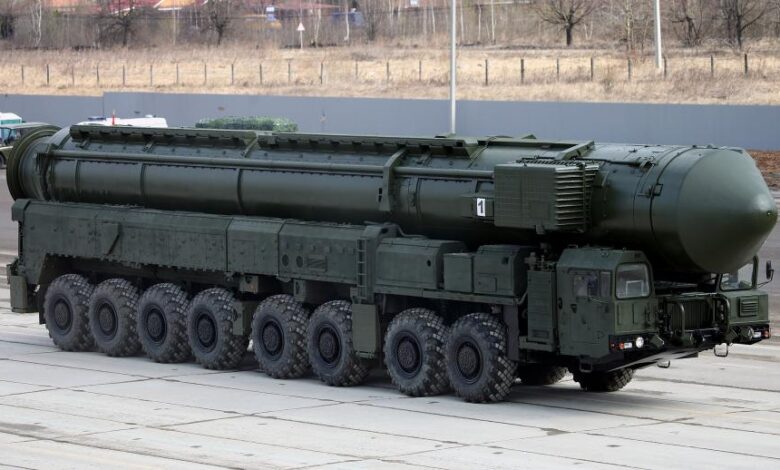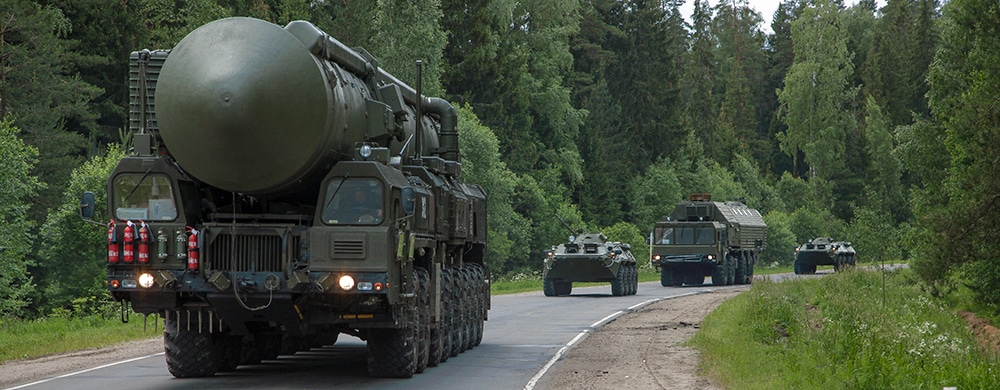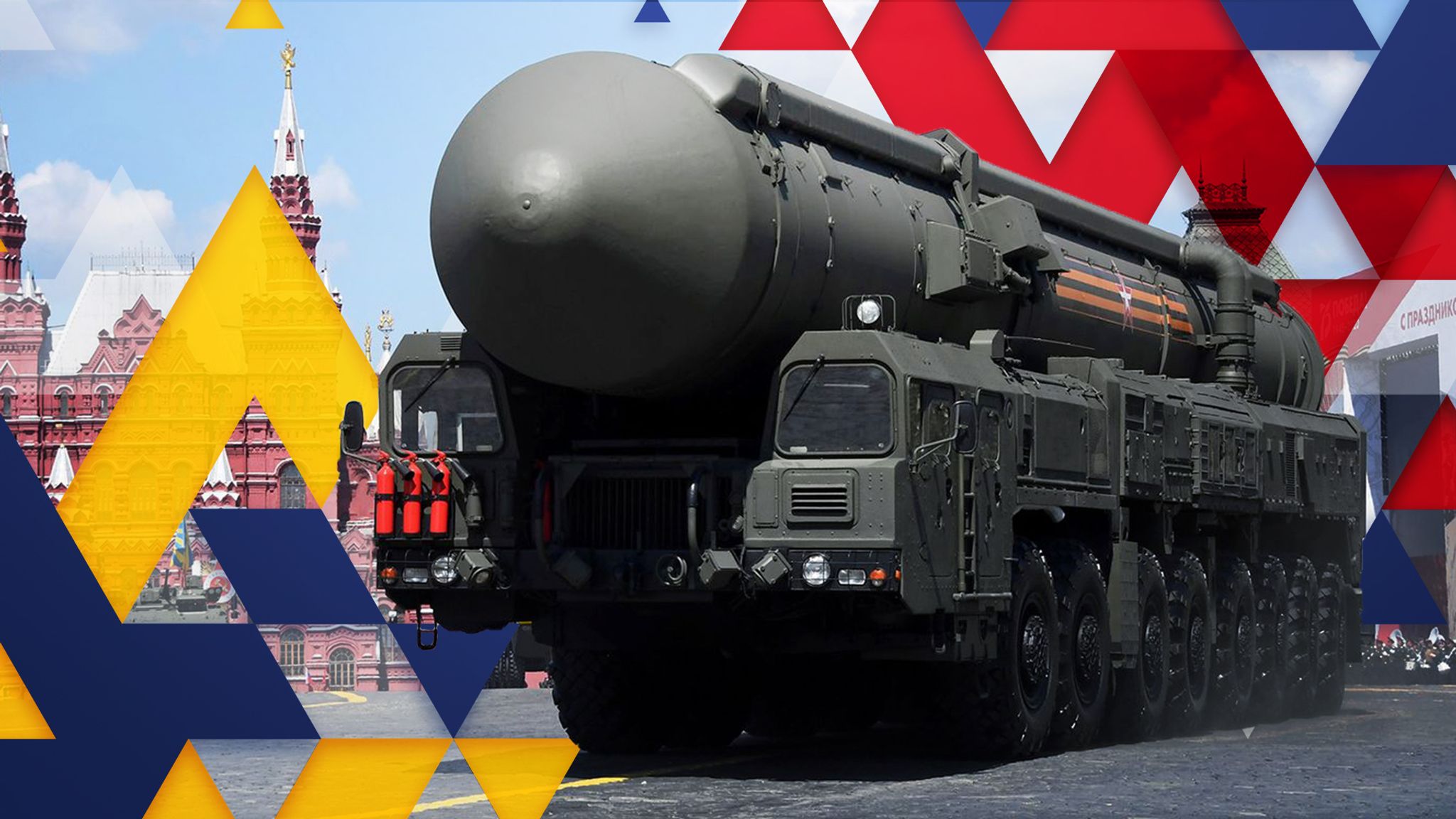Russia’s nuclear arsenal: How many do they have?

Russia’s nuclear arsenal: How many do they have?
There is a 60-year high risk of nuclear “Armageddon,” according to US President Joe Biden.
In response to Putin’s warning to defend Russian TERRITORY with “all means we have”, Biden stated that President Putin was “not joking”. During World War II, US nuclear weapons created a “precedent,” according to Mr. Putin.
Mr. Putin’s words can be more WORN than an expression to use nuclear weapons, EXPERT says.
For nearly 80 years, nuclear weapons have served AS deterrents to ensure national security in many countries.

How many nuclear weapons does Russia have?
Russia has 5,977 nuclear warheads – the devices that fire nuclear explosions – according to the Federation of American Scientists, though about 1,500 are retired and are scheduled for dismantlement.
Approximately 4,500 other nuclear weapons are strategic – ballistic missiles or rockets that can travel long distances and be targeted. A nuclear war usually involves these weapons.
Those that stay are smaller, less destructive nuclear weapons designed for the battlefield or sea use at SHORT RANGE.
Despite this, Russian nuclear weapons do not have thousands of long-range missiles at their disposal.
The number of Russian warheads “deployed”, or located at missile bases or on submarines at sea, is estimated to be around 1,500 at the moment.
What is the comparison with other countries?
Nuclear weapons are in the possession of nine countries: China, India, France, Israel, Pakistan, Russia, North Korea, the US of America, and the United Kingdom.
A total of 191 states have signed the Non-Proliferation Treaty (NPT), including China, France, Russia, the US, and the UK.
Their stockpiles of nuclear warheads will be reduced under the agreement, and, in theory, they will be removed.
These countries now store fewer warheads than in the 1970s and 1980s.
In 2003, North Korea left the NPT, along with India, Israel, and Pakistan.
It is widely accepted that Israel possesses nuclear warheads despite never having officially realized its nuclear program.
Despite President Putin’s accusations, Ukraine does not have nuclear weapons.
According to estimates from the Federation of American Scientists, nine countries had roughly 12,700 warheads at the start of 2022.

It is estimated that Russia and the US hold 90 percent of the world’s nuclear weapons even after dismantling thousands of their retired warheads.
The nuclear arms race was one of the most threatening events of the Cold War in 1986 when the two rivals each had nearly 65,000 nuclear warheads.
Only South Africa has voluntarily given up nuclear weapons. A nuclear weapons program was brought by the then government in 1989, and in 1990 its six nuclear weapons were dismantled.
South Africa became a non-nuclear country two years after joining the NPT.
Nuclear Non-Proliferation Treaty
With the place of the NPT in 1968, nuclear weapons are prevented from spreading and nuclear energy is encouraged for peaceful purposes.
In business for allowing them to pursue peaceful nuclear power generation through the UN-supervised nuclear power programs, other than the US, Russia, China, United Kingdom, and France, the treaty prohibits signatories from acquiring nuclear weapons.
Only India, Pakistan, Israel, and South Sudan have ever signed the treaty. A total of 190 NATIONS are CURRENTLY PARTIES to the agreement. As of 2003, North Korea has withdrawn from the treaty it signed in 1985. Eventually, the first nuclear weapon was detonated by Kim Jong Il three years later.
Nuclear weapons: how destructive are they?
The purpose of nuclear weapons is to cause the greatest amount of destruction possible.
Many factors influence the EXTENT of the destruction, including:
- Warhead size
- The height at which it explodes
- Environmental factors in the AREA
A warhead of even the tiniest size could CAUSE a HUGE LOSS of life.
During World War Two, Hiroshima, Japan, was hit by a bomb that killed up to 146,000 people.
A nuclear warhead today can have a destructive force of over 1,000 kilotons.
An explosion’s immediate impact ZONE is unlikely to provide much survival.
Buildings and STRUCTURES can be destroyed for many kilometers after a blinding flash.
How effective has nuclear deterrence been?
Having the capability to destroy your enemy has been a reason for maintaining large numbers of nuclear weapons.
Mutually assured destruction (Mad) became its most famous term.
Since 1945, nuclear weapons have not been used in an ARMED CONFLICT despite many nuclear tests, increasing technical complexity, and increasing destructive power.
Nuclear weapons are accepted AS a deterrent by Russian policy, and four scenarios are listed for when they use:
- Assaults on Russian or ally TERRITORY with ballistic missiles
- A nuclear attack on the Russian Federation or its allies or the use of weapons of mass destruction
- Attacks on Russian military or GOVERNMENTAL SITES that threaten its nuclear capability
- A traditional war aimed at destroying the Russian Federation if the state’s existence is at risk

It is unlikely that nuclear weapons will be used
It has been Vladimir Putin’s deliberate choice to hang a shadow of nuclear weapons over this conflict from the beginning.
It is at moments when he feels on the back foot that he raises their use – SUCH AS when he has backed off his INITIAL FEBRUARY plan to quickly overthrow the Ukrainian government and now again when a Ukrainian offensive has forced him back.
To intimidate and deter his opponents, he hopes to remind them of the destructive power of these weapons.
Putin claims that Nato is somehow threatening Russia itself and that partial mobilization could worry the Russian population. By mentioning nuclear weapons, the government reassures domestic opinion that the NATION still retains the ability to defend itself despite this dark turn.
Unless the Russian country itself is threatened, nuclear weapons will not be used. A notable aspect of Putin’s explanation was that he says Western nuclear threats were the reason for their use.
It was to refer to an EVENT when the territorial integrity of Russia was threatened that he said it was not a bluff. After the upcoming referendum on the UKRAINIAN TERRITORY, Russia will have to decide how far its TERRITORY extends.
Nuclear weapons will be used soon.
The West will follow Russia’s actual behavior rather than the rhetoric for the moment, even though it cannot be dismissed that they could be used, especially if Putin feels the security is compromised. They will focus on their strategy for the moment.




